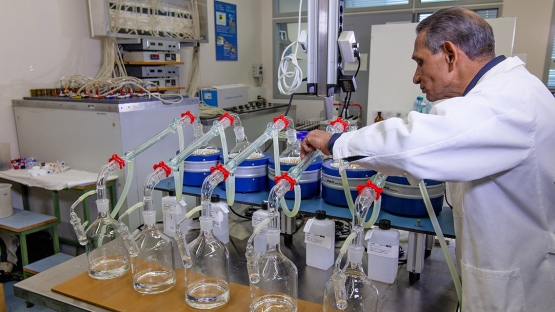Diagnosing the age of modern groundwater (< 60 years old) using tritium is important in mapping aquifer reserves and their vulnerability to surface pollution, but only half of 78 international laboratories carrying out such work are currently meeting the required analytical testing criteria. This was the result of a recent paper, prepared by scientists at the IAEA, published last month.
The IAEA has been conducting proficiency testing in laboratories worldwide since the 1960s to provide a baseline on the state of tritium analyses. Every four years the IAEA conducts and evaluates proficiency tests for tritium. This testing is one way for laboratories worldwide to voluntarily validate their expertise in this complicated testing procedure. There are two types of testing for tritium; monitoring laboratories who work with high levels of tritium and laboratories that test very low levels for groundwater age dating purposes. The majority of laboratories working with tritium participate in these tests.
The testing of tritium for groundwater aging purposes requires precise ultra-low level measurements and has a complicated sample preparation procedure. “The analysis of low levels of tritium in environmental water is a painstaking and complicated laboratory process of concentration and decay counting that requires weeks of hard work,” said Leonard Wassenaar, Head of the Isotope Hydrology Section at the IAEA. By conducting regular proficiency testing, errors and solutions to common mistakes can be more easily identified and corrected.






